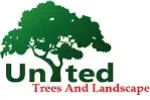Tree cutting Long Island
Important Factors to Consider Before Hiring a Tree Cutting Company
Whether you need a tree cutting-Long Island NY services or a tree pruning company in New York, it is important to consider a few important factors before contacting a professional. These factors include the cost of the service, the types of trees involved, and the type of disease or soil conditions that may affect the trees.
The cost of tree Cutting Long Island
Having a dead tree removed can be a dangerous undertaking. The cost of removal can run the gamut, from $200 to thousands of dollars. While tree removal may seem like a daunting task, there are a few simple steps to help reduce your costs.
The price to remove a tree can vary based on a number of factors, from the size of the tree to its condition. A good rule of thumb is that a tree up to thirty feet tall will cost around $1500, while a tree up to sixty feet tall will cost around $5000
The cost of removing a tree is also influenced by the location of the tree. The price to remove a tree from a remote location will be higher than the cost of removing a tree that’s closer to home.
While a tree may seem like a quaint addition to your landscaping, it can be a hazard if it becomes diseased or dies. If you’re unsure about the health of your tree, you may want to hire a tree service to take care of it for you.
The cost to remove a tree in Long Island, NY is not cheap. While the cost of removal may vary depending on the size and location of the tree, most homeowners spend around $700 to remove one tree.
Although the cost to remove a tree in Long Island is not cheap, there are ways to reduce the cost of the project. For example, you may want to replant a tree on the site instead of removing it. There are a number of benefits to replanting trees, including reducing your carbon footprint and providing an environmentally friendly landscaping solution.
Soil conditions affect trees
Having a healthy tree is a top priority for both homeowners and land managers in Long Island, NY. Trees serve many purposes, from providing cover for wildlife, to helping prevent pollutants from getting into local waterways. They are also excellent places to raise young.
There are many factors to consider when deciding on a tree for your yard, including tree size, girth, location, and soil type. In addition to selecting the right tree for your property, proper maintenance is essential to ensure its long life and health. For instance, tree pruning and proper mulching are the two pillars of the pyramid, while protecting the tree from compaction and extreme weather are a must.
While the old adage that a tree is a tree applies to most of the species, a few species are prone to disease or infestation. In the event that a tree does suffer from the disease, it is important to take steps to reduce the spread of the infection. In particular, homeowners should make a point of removing rotten branches.
Although the most recent hurricanes have had a profound effect on the health of trees, this is not the only time that this occurs. While most trees should recover in a few years, it is still a good idea to take preventive measures. Having a healthy tree is a good way to reduce your carbon footprint, and help fight climate change in the process. In addition to preventing storm water runoff, trees provide an array of other benefits, including habitat for birds, bats, and insects, and a myriad of food sources. A healthy tree also serves as a landmark.
The best way to ensure that you get the maximum return from your investment is to consult a reputable professional. The best tree surgeons in the business will be glad to help you with your tree project, from planting to pruning to mulching.
Diseases that affect trees In Long island
Keeping trees healthy and alive is important. However, disease and decays can affect trees in various ways. It is important to understand how to identify and treat these diseases. This can help to prevent further disease and decay.
Tree diseases are caused by different fungi and insects. Each species of tree is susceptible to different diseases. This can make a tree care very difficult. However, knowing the symptoms of different tree diseases can help you avoid these problems.
Wilt is one of the most common diseases that affect trees. It occurs when the fungus takes over the tree’s vessels and prevents water absorption. This results in the leaves turning brown and then falling off the tree. This prevents the tree from storing food for the winter.
Cedar-apple rust is a fungus that affects apple and juniper trees. This fungus is present in the phloem of the tree and causes yellow spots on the fruit. This fungus can also cause the fruit to fall off prematurely.
Beech tree disease is also a concern. This is a disease that is spread by sap-feeding beetles. Infected branches can turn dark brown and wet. They may also die from top to bottom.
The New York State Department of Environmental Conservation has been investigating the spread of beech tree disease in the Northeast. This disease affects native species of beech trees but is also found in ornamental beech trees. It first appeared in Nassau County in 2021.
Tree root disease is another disease that affects woody plants. This disease can be fatal and can go unnoticed for years. It is usually found in dry or drought-stressed areas. It attacks the roots and lower stems of the tree.
Stump grinding and removal
Stump grinding and removal for tree cutting in Long Island, NY is a complicated process. There are many factors that affect the cost. This includes the quantity of stumps, the size, the location, and the soil conditions.
In some cases, stump grinding and removal can be done without removing the roots. This can help make the stump easier to remove. It’s not a good idea to remove stumps that are flush with the soil level. This can cause damage to your lawn equipment, and it can pose a safety hazard.
In some cases, a tree professional will charge a flat rate per inch. This is a better way to save money in some cases.
In other cases, the price can increase if a professional needs to cut the trunk to the ground level. They will also charge extra for slopes, inclines, and rockier soil. If you need to remove multiple stumps, it may be cheaper to hire a professional than to rent a stump grinder.
Stump removal is a dangerous job. It can cause injuries and damage to people, as well as lawn equipment. It can also create tripping hazards. It is also a risk for the environment, as improper chemical application can be hazardous.
A professional will charge a minimum of $100 to cover the cost of the job. However, they will also charge a fee based on the number of stumps and the difficulty of the job. A large tree removal project may cost $2,000 or more.
Stump grinding and removal for tree cutting can be a difficult process, and it’s better to hire a professional. This can save you money, and it’s safer.
Disputes amongst neighbors
Disputes among neighbors after tree cutting in Long Island, NY is a common occurrence. Keeping the peace between your neighbors is not only beneficial to your neighbors, it is also beneficial to you. Disputes about trees, landscaping, and noise are some of the most common reasons why neighbors argue with each other. Keeping a positive relationship with your neighbors is an easy way to ensure peace and harmony.
Disputes among neighbors after tree cutting can be difficult to resolve. You and your neighbor may disagree about how the tree was removed, whether it was a good idea, and how much compensation you should get for the damage it did. Depending on the nature of the tree and the damage it caused, you may end up in small claims court or you may get lucky and settle without going to court.
One of the best things you can do is hire a skilled attorney to represent you in court. An attorney can provide you with detailed information about the best course of action. If you are lucky, you may be able to settle with your neighbor without ever filing Tree cutting long island Permits
Another thing you can do is check out some of the local ordinances that regulate aesthetic disputes. Many municipalities have ordinances in place that restrict noise nuisances and other dangerous conditions on your property.
In addition to checking out the local ordinances, you should also check out your deed. Usually, a deed will show you your property line. You can compare this with the deed of your neighbor’s property to determine which one is the correct one. If you can’t agree on which deed you should look at, you may need to hire a surveyor to determine where the boundary line is.

